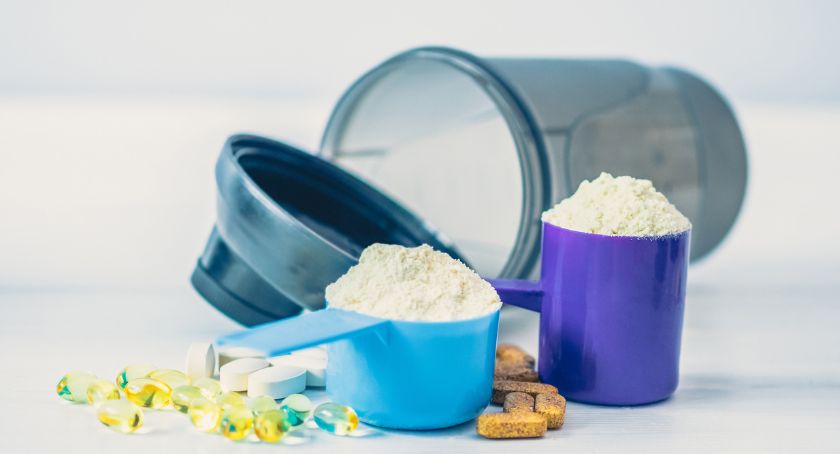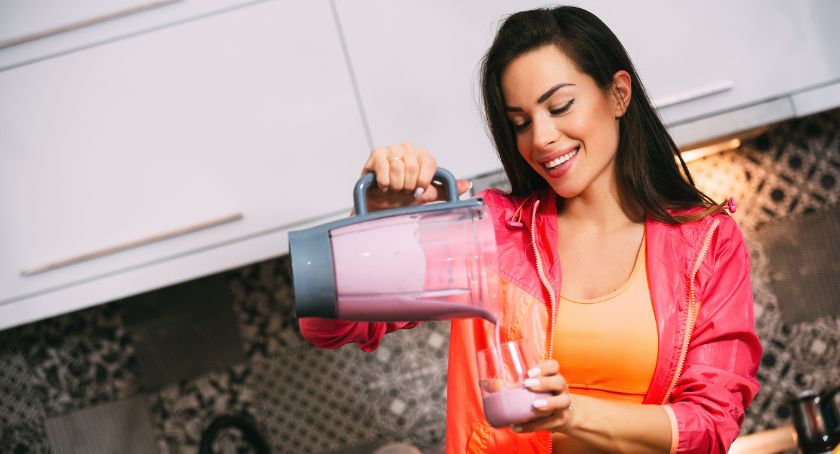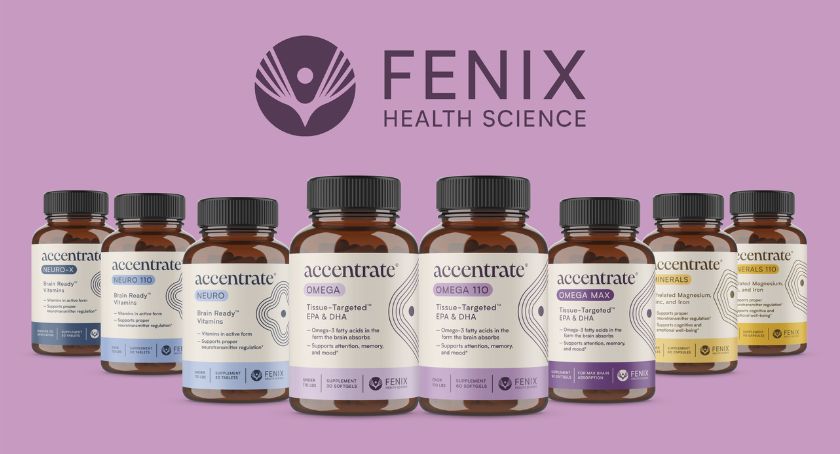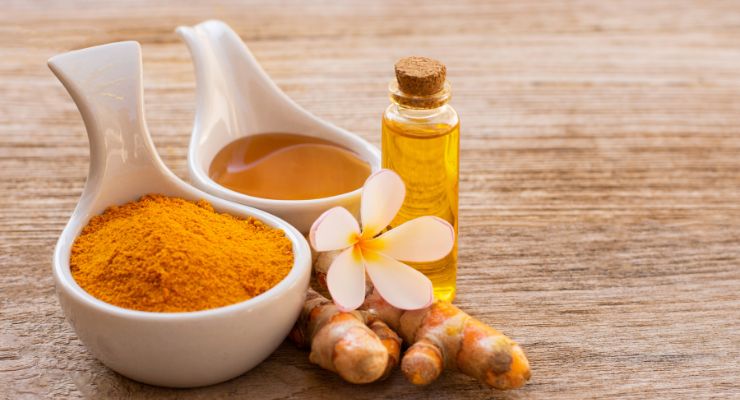Features
Taking Aim at a Healthy Sports Nutrition Market
Varied product solutions help consumers meet personal performance goals.

By: Sean Moloughney

With an expanding consumer base interested in a broad set of health goals, the market for active/sports nutrition products has been experiencing consistent growth in recent years, and has shown no signs of slowing down.
As companies pursue innovation opportunities, product safety, quality, and science-supported efficacy remain vital to the overall market’s integrity, as discerning, health-conscious consumers evaluate brands more judiciously.
Everyday Performance
The umbrella that encompasses consumers interested in active/sports nutrition related products continues to expand, said Steve Fink, vice president, marketing, PLT Health Solutions. “The spectrum ranges from bodybuilders and endurance athletes, to competitive and fitness athletes, on to people who enjoy an active lifestyle, or your weekend warrior. All of these groups have their own interests and needs, but not surprisingly, what sports/active nutrition offers is finding common ground across all groups. Who wouldn’t want, for example, peak performance in a workout or sporting event, or faster recovery and relief from pain from sports activity, or improved overall health? All of these benefits are available from today’s sports/active nutrition products.”
Formulations have become more sophisticated as well, Fink noted. Twenty years ago, sports nutrition products targeted bodybuilders and featured single ingredients. Today, product developers are offering combination products that are pushing the market into new territory, adding value, and creating new categories and points of differentiation.
“In today’s fast-moving sports nutrition market, traditional consumers want more,” Fink said. “Product formulators simultaneously want to differentiate their products, obtain premium pricing, and to disrupt the market. At the same time, delivery systems are becoming a point of differentiation for traditional users—but particularly for everyday consumers as the sports nutrition market goes more mainstream.”
Overall, the everyday consumer has changed the face of the sports nutrition industry, said Juliana Erickson, senior marketing manager, Lonza Consumer Health & Nutrition. “Increasingly driven by their personal values and preferences, the way today’s consumers define and cultivate health is expanding. As individuals worldwide become more aware of—and concerned about—what they are putting in their bodies, more shoppers are seeking ways to live longer, more fulfilled lives and make purchasing choices that reflect their own preferences. This is, in turn, driving greater demand for cleaner, more natural and sustainable sports nutrition products that are science-backed, support a healthy lifestyle, and offer the transparency and traceability consumers desire.”
Millennials in particular have been a significant driving force behind the evolution of the active nutrition landscape, said Erickson. “The growing clean label trend is also a key driver, with the two megatrends increasingly converging in recent years.”
Once reserved for serious athletes, the sports nutrition category has grown to be far more inclusive, said Shaheen Majeed, president worldwide, Sabinsa. At the same time, emerging research has demonstrated a wider range of benefits than products offered in the past.
For dedicated athletes, products need to support performance and be tested against banned substances, he suggested. For everyone else, active nutrition may relate to the energy and stamina to go to the gym after working a full day and also tend to family and personal lives. For older consumers, staying active and independent is an important priority. “Whatever their circumstances and goals, sports nutrition consumers want products that are safe and effective,” Majeed noted.
Popular products integrate multiple benefits, according to Andrew Wheeler, vice president of marketing, Van Drunen Farms/FutureCeuticals, “from brain function to improved sleep to immune and endothelial health.” Products should also emphasize preventive, well-rounded approaches to wellness.
“Successful finished products in this category must now appeal to a broader target audience—from hard core athletes to weekend warriors to those seeking an active lifestyle,” said Wheeler. “Women are another key demographic that have been previously overlooked but are now driving market innovation.”
Tim Hammond, vice president of sales and marketing, Bergstrom Nutrition, also noted that sports nutrition research has historically focused on men. “Recognizing how nutritional needs can differ significantly between genders is an evolution within the industry that presents exciting opportunities. We at Bergstrom Nutrition see nutritional support for women as an under-developed market with huge potential and are moving forward with female-focused OptiMSM research. A new focus on the often-overlooked dietary needs of the female population and their requirements for proper metabolism presents growth possibilities, new marketing challenges, and creative formulation opportunities.”
Ultimately, more athletes and active consumers understand that exercise, diet, and nutrition have a direct impact on health, longevity, and performance, said Dan Murray, vice president of business development, Xsto Solutions. “As this awareness increases, consumers will continue to look for supplements that support their healthy and active lifestyles.”
Sébastien Bornet, vice president, global sales and marketing at Horphag Research, noted the millennial generation has been a driving force behind market growth for fitness supplements. “Millennials are becoming more interested in adopting consistent health and wellness routines to prevent health issues later in life. Energy and vitality are the key components in keeping up with these routines. In addition, individuals in the baby boomer generation are becoming more interested in incorporating regular exercise into their routines to live longer, healthier lives.”
Overall, more people recognize the important role nutrition products play in helping them achieve their fitness or sports performance goals, noted Ivy Grace Pait, sales division, Glico Nutrition. “Consumers are looking for high quality, rapidly absorbed ingredients to support long periods of physical activity.”
Social influencers have played a key role in making sports nutrition more mainstream, she added. “Because of this, products have also diversified to include more convenient, personalized, or tastier formats.”
Consumers also value research-backed products. “They want to be fully informed with what enters their bodies, and make sure that product claims are supported by actual test results,” Pait noted.
Weekend warriors and health-conscious consumers are looking for products that fit their lifestyles and will help them achieve overall wellness, said Stephanie Lynch, vice president of sales, marketing, and technology, International Dehydrated Foods (IDF). “Protein applications specifically are gaining in popularity among general consumers. This is evident walking through the grocery store, where protein claims can be found on everything from cereal to ready meals and even ice cream.”
New Consumers & Categories
According to Anthony Almada, MSc, FISSN, consultant in residence, Indena SpA, consumers today perceive sports nutrition products to be complementary solutions for enhancing performance or recovery, and/or assisting in the “remodeling” of their physique, by supporting body fat loss or increasing muscle mass.
The most palpable shift in the market in recent years has been “the augmented desirability and acceptability of protein-centric foods, supplements, and beverages among females, the birth and maturation of the category of stimulant-centric ‘pre-workout’ products, and the incremental focus on products positioned to assist in (post-activity) recovery,” he noted.
Additionally, a broader distribution footprint—from specialty retail into mass market/club stores—has exposed more people to products in a manner and frequency that would rarely be experienced through e-commerce.
“Digital media storytellers and influencers have buoyed ingredient, product, and brand awareness,” Almada noted. “The linkage of plant-centered and vegan diets with athletic activities and physiques, coupled with food and beverage formats enriched with ingredients typically found in solid dose and powdered forms, has facilitated adoption by highly divergent demographic and psychographic cohorts: yoga participants opting for a post-activity, plant-based protein powder or drink, and eschewing carbohydrates; golfers consuming energy drinks with added creatine, quercetin, coenzyme Q10, and amino acids—in addition to caffeine.”
Niche market segments also continue to emerge and drive innovation, according to Lonza’s Erickson. “E-sports, which has boomed in line with the rise of gaming, places huge demands on the body and has seen growing numbers of players seeking sustained energy levels and mental clarity to help them stay focused for several hours of continuous play at a time. While not a typical ‘sport,’ e-sports represents an opportunity for manufacturers to create nutritional solutions that enable longer, modified release for sustained energy and focus.”
Andreas Berg Storsve, director of research and development, Aker BioMarine, said there is no question the sports nutrition industry has broadened its target audience. “With an increasing level of consumer interest in general health and wellness, as well as maintaining body image, sports nutrition manufacturers are going broader to meet various demands. The sports nutrition category is evolving like never before, and omega-3s are very much a part of the conversation.”
In addition to its expanding consumer base, new products are on the rise, he added. “From protein to omega-3s, various ingredient types are gaining momentum in the category, opening the doors to companies like Aker BioMarine for new opportunities.”
Penny Portner, director of marketing, Bioenergy Life Science, noted that sports nutrition interests everyone from average people trying to be healthy to weekend warriors and sports professionals who want to enhance performance through nutrition. “This category is wide open, especially for ingredients such as Bioenergy Ribose that are easy to work with and that help enable the body to work at its best, at virtually any stage or age.”
The active lifestyle user is really driving the sports nutrition category in new directions, according to Elyse Lovett, senior marketing manager, Kyowa Hakko USA. “They aren’t afraid to try new ingredients that help them achieve their health goals, but they are also meticulous about the products they buy. They want functionality and clean label as well as ingredients that are backed by science.”
To the everyday consumer, sports nutrition is still about active lifestyle and healthy living, she noted. “Being able to support their daily health goals while being active is important. The everyday consumer may be looking for something different when it comes to supplementation and their individual goals.”
For example, the active everyday consumer may look for pre/intra-workout powder formats while those who just participate in weekend activities may look for hydration/rehydration benefits. “And then there are others that are looking for their brain-body connection for their performance goals, whether on the field, at work, or at home.”
Protein has also helped push sports nutrition products from the gym to mainstream, according to Samantha Ford, director of business development, AIDP Inc. “In addition, sports nutrition products take many delivery forms such as bars, beverages, and functional foods, which has expanded the market.”
Delivering on Expectations
From the avid gym-goer to elite athletes, consumers are often looking for natural products to boost endurance, improve focus, speed recovery, or build muscle, said Ford. “As athletes age, interest grows in collagen and products alleviating knee and joint discomfort. In addition, as weight management products are being positioned as lifestyle solutions, they are playing a larger role in the sports nutrition category.”
Whether training for competitive sports or just trying to keep fit, health enthusiasts utilize dietary supplements, foods and beverages to maximize their investment in exercise, said Guy Woodman, general manager, Euromed USA, Inc. “They are seeking products that will provide a mental or physical performance edge and support overall health and well-being. Older individuals are attempting to offset the loss of muscle mass and aerobic capacity experienced with aging.”
At the same time, quality concerns have been spotlighted, for example, when professional athletes are fined or suspended from competition for consuming products that contain undeclared performance-enhancing drugs.
“It is challenging to track the origin of some sports nutrition ingredients as they move from an overseas manufacturer to broker to distributor to the U.S. marketer, said Woodman. “With Euromed’s standardized botanical extract, customers have assurance of the complete traceability from the starting botanical material to the final extract. Every batch undergoes a minimum of 20 laboratory tests from starting herb to final extract in our PhytoProof process of quality control.”
Aker’s Storsve agreed that consumers are looking for brands that are transparent and reflect their own personal values. Origin story, sustainability efforts, and corporate social responsibility all factor in their decision making.
“The global demand for sustainable and traceable products is growing and this is extremely positive for our industry. Furthermore, research is equally important and the team at Aker BioMarine will continue to look at krill oil for various applications in sports nutrition and beyond. In fact, the company is supporting new clinical trials that evaluate how a phospholipid-bound omega-3 product can help improve sports performance and recovery after training.”
Sports nutrition consumers are extremely scrutinizing, said Almada. “The core physique enthusiast (e.g., bodybuilder) typically examines labels for the presence of desired ingredients and amounts; the endurance enthusiast (e.g., competitive marathoner, triathlete) examines labels for the presence of both desired and undesired (‘unclean’) ingredients, and banned substances testing; and the aspirational/episodic consumer seeks halo ingredients quality/provenance over quantity, clean label rigor/transparency, and perhaps banned substances testing.”
Consumers want products that are safe and effective, and they expect transparency, said Sabinsa’s Majeed. “Athletes that compete need assurance that products are tested for banned substances. Research is key, so choosing ingredients for formulations backed by published clinical studies and using the amounts the studies identified is smart. Bottom line is if a product doesn’t work, the consumer won’t buy it again.”
A range of factors motivate consumers, which become more specialized as products target specific needs, noted Fink, from PLT Health Solutions. “While not approaching the idea of personalized nutrition, per se, customers are looking for a ‘made for me’ experience.” Elements that consumers might want in their products include: nutrition, energy, recovery support, immune support, pain mediation, cognitive/focus/mood support, weight management, and clean labels.
“In fact, it might be safe to say that consumers at some point will want all of these with different emphasis based on who they are and what they hope to accomplish or train for,” Fink added.
Sports nutrition today is about much more than building muscle. “It’s about nutrition with purpose, staying active, and taking care of our bodies and minds,” said Wheeler from FutureCeuticals. “Demands for convenience, personalization, plant-based ingredients, and clean-label transparency have driven the evolution of the modern sports nutrition consumer, giving way to a new face of sports nutrition.”
According to IDF’s Lynch, clean label and transparency are important trends throughout the food industry, “but consumers are also looking for sports nutrition products that offer the nutrients they feel are important for meeting their personal goals. They also want products that align with their lifestyle choices—paleo or keto, for example.”
With a wealth of information readily available 24 hours a day, consumers are becoming more and more educated, according to Bergstrom’s Hammond. “Living in this information age has most seizing the opportunity to learn more about their health in new ways. Their empowerment has them looking to products that clearly display all ingredients and how they affect bodily mechanisms.”
Consumers are always looking for a competitive edge in new products, said Xsto’s Murray. “There is an inherent preference for smaller dose applications when things don’t work in a powder drink mix. For instance, an ingredient with a 300 mg dose stands to do better than an ingredient with a 2 or 3 gram dose when considering capsules. It’s important that a product is convenient and easily fits into the lifestyle of a healthy person.”
Consumers will often do their research before buying a product, so clean labels and scientific support also play a big role in decision making, he added. “Anecdotal evidence does not help establish an efficacious ingredient. It is also important that a product helps them achieve a certain goal. Results build loyalty in sports nutrition.”
Pre- and post-workout drinks are a good example of modern products that deliver nutrition support. “We also have a better understanding of what an intense workout can do to your body in terms of gastrointestinal stress and muscle breakdown. Younger people are looking for energy and performance support whereas older people are geared toward activity with less joint and muscle pain and inflammation.”
Trends like clean labels and plant-based formulations continue to be in demand among fitness enthusiasts, said Bornet. “Consumers have a greater understanding of the active ingredients in the products they purchase, and manufacturers are shifting to simpler product labels with straight-forward, branded ingredients with proven efficacy. Our latest ingredient, Robuvit, is the result of years of intense research and development that follows in line with our commitment to quality, safety, and efficacy. The ingredient is patented and standardized to ensure consistent, high quality formulations. For delivery formats, convenience and quality are key.”
Larry Kolb, president, TSI USA, Inc., noted that, first and foremost, consumers expect sports nutrition products to be safe and effective. “Ingredients need to be clinically validated, and its beneficial effect meaningful to the individual consumer’s needs. While sports nutrition consumers are looking for new things to try, they like to educate themselves about the mechanism of action and the sports-specific benefits. They usually have a stack of go-to ingredients (protein, creatine, HMB, ATP), and depending on their individual goals, look for pre-workout products or additional help with recovery.”
Branded ingredients on product labels can help communicate safety and clinical validation, Kolb added. He also offered a word of caution: “product claims have to be realistic and in line with what the sports nutrition ingredient can and cannot deliver. Just as Air Jordan sneakers don’t make you ‘jump like Mike,’ sports nutrition products will not turn a weekend warrior into and elite athlete.”
Marianne McDonagh, vice president of sales, Bioenergy, said research-backed ingredients, clean label, and quality seals are top-of-mind for most people. “Consumers want to make sure these products are truly safe and effective. We also know that consumers’ understanding of ATP and its precursors is evolving, which is driving specific interest in Bioenergy Ribose. Athletes frequently seek increased ATP levels to produce sustained cellular energy for strength, power, and/or endurance. Increased ATP also helps non-athletic individuals adapt to physical activities or exercise.”
Ingredients of Note
Protein continues to have a “preeminent and unabated ranking,” among sports nutrition ingredients, according to Almada, “cutting across gender, depth of commitment/participation, and age. Branched-chain amino acids are prominent, despite the lack of compelling evidence supporting their utility among persons already consuming adequate amounts of protein.”
The repurposing of flavonoids, especially quercetin, for sports nutrition applications has seen an incremental rise since the first human study revealed its ability to influence muscular endurance capacity, Almada continued.
“Unlike other ingredients that are well absorbed (whey protein, creatine monohydrate, caffeine), quercetin has significant variability between individuals, with ‘non-responders’ perhaps comprising a notable percentage of users. The advent of superior bioavailability forms of quercetin, like Quercefit, which leverages sunflower lecithin-based Phytosome technology from Indena, opens up new vistas of use related to performance and recovery applications.”
This same technology has been applied to coenzyme Q10, branded as Ubiqsome, resulting in what Almada said may be the first and only coenzyme Q10 delivery system that has demonstrated optimal concentrations in human skeletal muscle after oral supplementation.
Omega-3 fatty acids are well known for their anti-inflammatory properties and for supporting cardiovascular, brain, and joint health, noted Storsve, from Aker BioMarine. “In recent times, however, more research is pointing to omega-3s as an essential nutrient for sports endurance and recovery, and krill oil in particular has many advantages and great potential for athletes.”
High volume/high-intensity exercise is known to negatively impact immune function, making athletes vulnerable to illness and infections, he continued. “This may in turn cause training disruptions and negatively impact performance in the long run. However, published research has shown that krill oil increases the immune response following high-intensity exercise, which may in turn influence athletes’ recovery times. Furthermore, an ongoing study conducted on triathletes participating in one of the world’s most demanding triathlons, the Norseman Xtreme Triathlon, suggests that participants with relatively higher omega-3 levels returned to high-intensity training more rapidly than participants with relatively lower omega-3 levels. We are currently intensifying our research efforts in this area.”
Ultimately krill oil has the potential to be “a real game-changer,” Storsve said. “As more research comes to fruition, we will continue to see that krill oil has the ability to drive the sports nutrition market into new directions like never before.”
Mainstream consumers are looking for “clean proteins,” according to AIDP’s Ford. “A younger demographic is interested in plant-based products. AIDP is continually evaluating and creating new plant proteins.Recently we’ve been working on a highly soluble pea protein ideal for the beverage market. Our Magtein, while positioned as a cognitive health product, is used by athletes to maintain motivation and focus in workouts. It is supported with a high level of clinical research which is of particular interest to elite athletes.”
Protein is still king, she added, especially as the lines between sports nutrition, lifestyle, and weight management have blurred.
Solutions that create cleaner, healthier and more effective products, in line with the demands of today’s active consumers, are increasingly pushing the boundaries in the sports nutrition market, according to Lonza’s Erickson. “For instance, Lonza’s innovative, vegan MuscleGuard formula—launched to the U.S. market in October 2019—showcases our science-led approach to ingredient innovation, bringing clinical evidence together with consumer trends and preferences.”
The MuscleGuard formulation blends four ingredients: Carnipure tartrate, creatine and leucine with vitamin D. Clinical research identified that the combination supports significant muscle health benefits, including a 63% increase in muscle strength, mass, and activity in a clinical study on older people.
“Lonza’s patent-pending MuscleGuard formulation may be ideal for use by both male and female athletes and active individuals. Vegan and vegetarian, the research also indicates it may offer nutritional support for pre-, intra- and post-workout,” said Erickson.
Amino acids are always a good choice for sports nutrition especially in the area of muscle maintenance, according to Kyowa Hakko’s Lovett. “There are more unique products on the market like Kyowa Hakko’s Sustamine, the branded form of L-Alanyl-L-Glutamine, which has been shown to be 224% more absorbable than glutamine alone, a great choice for hydration benefits.”
Pre-workout and recovery ingredients with human science are at an all-time high in terms of consumer demand, according to Wheeler from FutureCeuticals. “Consumers do their homework and require the gold standard in terms of science-backed claims. In vitro or animal studies just do not pass the test for savvy sports nutrition consumers. In addition, joint and brain recovery ingredients are becoming as in-demand as muscle recovery, and we are seeing a real shift to the cognitive part of pre-workout. Sometimes pushing through ‘the wall’ is as much a mental proposition as a physical one.”
According to Fink, from PLT Health Solutions, “There is a plant-based food revolution underway in supermarkets and specialty stores around the world.” A recent study by Nielsen, commissioned by the Plant Based Foods Association, found that sales of plant-based foods grew by 20% in the 52 weeks ending June 16, 2018 reaching a total of $3.3 billion.
In the supplement/sports nutrition space, plant-based protein powders often rely on either sweeteners or masking agents to overcome taste challenges, he added. This may result in less healthy products and labels that aren’t as consumer friendly. “Artesa Chickpea Protein was the first chickpea-based protein concentrate available in commercial quantities,” Fink said. “PLT partner Nutriati, LLC re-engineered the manufacturing process for Artesa to address some of the main ‘pain points’ related to formulating with plant proteins—starting with ingredient taste and overall in-product sensory experience. Consumer testing has shown that Artesa can approach the sensory and formulating experience of dairy proteins in the areas of taste, texture, product structure, and mouthfeel. Because of its organoleptics, functional foods and supplement powders can be made without sweeteners and with leaner, cleaner labels.”
PLT’s newly launched Zynamite is a patent-pending proprietary Mangifera indica extract standardized to ≥ 60% mangiferin, produced from sustainably harvested mango leaves. It was developed as part of a comprehensive ethnobotanic screening process designed to deliver a range of mental and physical benefits, Fink said.
This self-affirmed Generally Recognized As Safe (GRAS) ingredient has been the subject of three pre-clinical and six clinical studies. “The primary areas of application will be in cognitive health products where it provides mental energy, and in active/sports nutrition products where it has been demonstrated to improve both peak power output and mean power output in fatigued and exhausted subjects,” Fink noted. Zynamite supports both the mental and physical aspects of sports performance, he added.
Considering the many side effects of prescription and OTC pain relievers, it’s not surprising consumers are exploring other options, often products derived from food sources, noted Andrew Downey, marketing manager, Xsto Solutions. “As an example, Cuvitus is a whole-fruit cucumber extract with scientific evidence supporting reduction in pain-related biomarkers for improved comfort, and quality of life. With Cuvitus we can help address recovery from temporary over-exercise. The food-based approach to cover temporary pain and related conditions such as muscle and joint health is more appealing than prescription drugs and OTC pain relievers.”
During intense exercise, there’s a mild increase in oxidative stress due to increased aerobic respiration, noted Sabinsa’s Majeed. “Many of the products with potential antioxidant and immunomodulatory properties improve oxidative stress, which helps to reduce intensity of inflammation. Components such as curcumin and its derivatives have been shown to improve oxidative stress and to support healthy muscle architecture.”
Turmeric is used extensively in Ayurveda for managing a number of conditions. In recent years, research has identified curcumin, one of the several phytochemicals present in turmeric, to likely be responsible for most of the health benefits, said Majeed. “Additional research found that curcumin is typically accompanied by demethoxycurcumin (DMC) and bisdemethoxycurcumin (BDMC), the two other minor curcumin analogues present in turmeric which provide health benefits. All these well-studied bioactive components of turmeric, collectively termed curcuminoids, have been found to exert synergistic action. Curcumin C3 Complex is the #1 clinically studied curcumin brand.”
Boswellia serrata is another herb widely used as a sports supplement. Various studies have shown the immunomodulatory potential of Boswellia serrata to combat post-exercise stress, said Majeed. “Sabinsa’s Boswellin extract is a potent 5-Lipoxygenase inhibitor, which gives it anti-inflammatory properties.”
Horphag’s Robuvit French oak wood extract has been shown to support energy and sports endurance, according to Bornet. “Robuvit is a caffeine-free natural energizer. Several studies show that Robuvit helps to reduce the effects of fatigue. For chronic fatigue sufferers, increased levels of oxidative stress can be one of the major precursors of the condition. Robuvit is shown to reduce oxidative stress levels. In addition, Robuvit metabolites have been shown to activate mitochondria, the powerhouse of the cell, producing energy.”
A 2015 study published in Minerva Cardioangiologia evaluated the effects of Robuvit on performance and endurance in triathletes over a two-week triathlon training period. Athletes in the study reported heightened endurance and that they needed less recovery time between races, which in turn allowed for improved overall time, pace, and more sustained levels of energy throughout a triathlon event.
The study found that in the beginning stages, both groups (one taking Robuvit and another as a control group) reported roughly the same times. However, after two weeks, the group taking Robuvit experienced an 11% improvement in overall time, while the control group improved time by only 4%.
“Researchers found that as a result of taking Robuvit daily, athletes experienced less pain and general discomfort than they would normally after a triathlon,” Bornet added.
Pomegranate juice and extracts have been shown to support heart health, according to Euromed’s Woodman. “New research, including two review articles published over the last two years, have touted its ergogenic activity to improve aerobic and anaerobic exercise performance and post-exercise recovery. A 2019 study published in the journal Nutrients tested Pomanox in 26 highly trained cyclists. Investigators at the Department of Exercise Physiology at the San Antonio Catholic University of Murcia, Spain, found supplementation extended the time it took to physical exhaustion after extensive cycling training sessions and increased the time to reach ventilatory threshold. Pomanox is a high potency 30% punicalagins extract made from pomegranate whole fruit, including the juice, that undergoes an eco-friendly Pure-Hydro extraction process.”
According to IDF’s Lynch, while “plant-based” is trending across the food industry, including in the sports nutrition market, “the truth is that nothing can beat the nutrition of meat proteins for muscle building and recovery. For example, our CHiKPRO chicken protein isolate ingredients offer the same nutrition as eating a piece of chicken. In addition to high quality protein, CHiKPRO offers the nutrients (like zinc and iron, based on a 100-gram serving) necessary to promote and maintain balanced nutrition, is rich in electrolytes, and has a 2:1 potassium/sodium ratio to support recovery and rehydration.”
Because of its high-quality amino acid profile, every gram of CHiKPRO counts toward the label daily value, she added. “Plant-based options are not complete proteins, and much higher amounts are required to contribute the same about of essential amino acids to an application compared to CHiKPRO,” said Lynch. “Additionally, chicken protein aligns with many other diets rising in popularity. It is keto-friendly and Certified Paleo. Furthermore, it is free from common allergens, including whey, soy, and gluten.”
There has been substantial focus on ingredients that optimize recovery, noted Michael Crabtree, director of scientific affairs, Bioenergy. “The body’s ability to adapt to stress and the quality of its post-exercise recovery are directly proportional to concentrations of ATP and NAD, both of which are critical to recovery and performance. Supplements such as D-Ribose or RiaGev offer balanced levels of precursors to optimize the recovery process.”
Exercise increases the body’s consumption of oxygen and induces oxidative stress, he continued. This leads to the production of reactive oxygen and nitrogen species (i.e., free radicals) and the creation of more oxidized molecules in muscle and other tissues. “In theory, free radicals could impair exercise performance by impeding muscles’ ability to produce force, thereby accelerating muscle damage and fatigue and producing inflammation and soreness. Increased ATP levels are also associated with reduced muscle soreness, stiffness, and cramping; increased muscle mass; as well as improved heart function, greater lung capacity, and better metabolism.”
Total muscle mass is always in flux, according to Kolb at TSI. “New muscle is being built while parts of the muscle breaks down. Total muscle mass is the sum of muscle protein synthesis and breakdown. HMB (beta-hydroxy-beta-methyl-butyrate) has a unique mechanism of action. It has been shown to increase muscle protein synthesis via the mTOR pathway, and HMB inhibits protein degradation via the proteasome pathway.”
HMB has been shown to increase muscle protein synthesis by 70%, while reducing muscle breakdown by 57%, Kolb noted. “HMB reduces muscle damage and inflammation after exercise, and increases recovery. Due to its strong effect on reducing muscle breakdown, HMB is specifically effective during strenuous exercise, reduced periods of recovery, and in novice athletes, all situations with increased muscle breakdown. HMB attenuates muscle and strength loss during sustained energy deficit induced by calorie restriction or endurance exercise.”
Meanwhile, ATP is the cell’s energy currency. “The human body contains approximately 250 grams of ATP and the daily ATP turnover is roughly the body’s weight, which highlights the importance of ATP as the body’s energy source,” Kolb said. “Numerous ingredients try to increase energy by increasing ATP stores indirectly, however, a patented form of ATP is available as PEAK ATP, allowing consumers to directly supplement ATP.”
PEAK ATP shows measurable and meaningful improvements in athletic performance after just one dose, Kolb added. “Acute, one-time, supplementation with PEAK ATP has been shown to increase training volume (weight lifted) and number of reps by 24%.”
Sulfur-rich OptiMSM helps support and preserve connective tissue, according to Bergstrom’s Hammond. “Be it muscle, joints, ligaments, or skin, MSM provides multiple benefits for manufacturers to consider for their fitness and health-focused customers. Human studies on OptiMSM suggest MSM protects cartilage, supports joint health, and improves mobility. MSM also promotes muscle adaption while reducing muscle damage and oxidative stress—all of which bolster athletic pursuits.”
Bergstrom Nutrition is also pursuing female-specific research based on the results of a recent, yet unpublished, study on OptiMSM performed at UC-Davis. The initial research suggests OptiMSM increases collagen cross-linking, Hammond noted. “MSM was also demonstrated to completely reverse the adverse effects of estrogen on ligament mechanics in engineered human ligaments treated with high estrogen. The current clinical study is focusing on determining the impact of OptiMSM on knee laxity changes through the menstrual cycle of active young women.”
According to Hiroki Himeno, global sales group, Glico Nutrition, in muscle recovery, especially focusing on muscle glycogen resynthesis, it’s important to ingest carbohydrates immediately after a workout. “Our Cluster Dextrin, also called highly branched cyclic dextrin is the best carbohydrate for muscle recovery. It shows high solubility in water and fast gastric emptying time due to a uniform high molecular structure. Some clinical studies showed that Cluster Dextrin also enhanced stamina, reduced fatigue, and suppressed inflammatory stress.”




















